Phosphating is a chemical and electrochemical reaction to form a phosphate chemical conversion film. The phosphate conversion film formed is called a phosphate film.
The purpose of phosphating is mainly to provide protection to the base metal, to prevent the metal from being corroded to a certain extent; to base the paint before painting, to improve the adhesion and corrosion resistance of the paint layer; to reduce friction in the metal cold working process Lubrication is used.
1. Basic principles
Phosphating processes include chemical and electrochemical reactions. The phosphating reaction mechanism of different phosphating systems and different materials is more complicated. Although scientists have done a lot of research in this area, they have not been fully clarified so far. A long time ago, the phosphating film formation mechanism was briefly described by a chemical reaction __ equation:
Me is Mn, Zn, etc., Machu et al. believe that steel is immersed in a high temperature solution containing phosphoric acid and dihydrogen phosphate to form a grain-like phosphating film composed of phosphate precipitates, and produces iron monohydrogen phosphate sediment and hydrogen. This mechanism is relatively crude and does not fully explain the film formation process. With the gradual deepening of phosphating research, today's scholars agree that the phosphating film formation process is mainly composed of the following four steps:
1 Acid etching reduces the H+ concentration of the base metal surface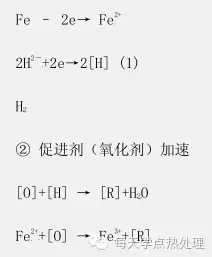
Where [O] is a promoter (oxidizing agent) and [R] is a reducing product. Since the promoter oxidizes the hydrogen atom generated by the first step reaction, the rate of the reaction (1) is accelerated, further causing a sharp increase in the H+ concentration on the metal surface. decline. It also oxidizes Fe 2+ in solution to Fe 3+
3 multi-level dissociation of phosphate

Due to the sharp drop in the concentration of H+ on the metal surface, the dissociation equilibrium of the phosphates moves to the right, eventually to PO4(3-).
4 Phosphate precipitation crystallizes into a phosphate film
When the metal surface is separated from the PO4(3-) and the metal ions in the solution (metal interface) (such as Zn 2+ , Mn 2+ , Ca 2+ , Fe 2+ ) reach the solubility product constant K
Phosphate precipitation
The phosphate precipitate forms a phosphating crystal nucleus together with water molecules, and the crystal nucleus continues to grow into phosphating grains, and numerous crystal grains are closely packed to form a phosphate film.
The side reaction of phosphate precipitation will form phosphating sediment

The above mechanism can not only explain the phosphating film formation process of zinc, manganese and zinc calcium, but also guide the design of phosphating formula and phosphating process. It can be seen from the above mechanism that a suitable oxidant can increase the rate of reaction (2); a lower H+ concentration can make the dissociation equilibrium of the phosphate dissociation reaction (3) more easily move to the right to dissociate PO4(3-); the metal surface If there is active surface combination, the precipitation reaction (4)(5) can form phosphate precipitated nucleus without too much supersaturation; the production of phosphating sediment depends on reaction (1) and reaction (2) The concentration of the solution H + is high, and the strength of the promoter increases the sediment. Correspondingly, in the actual phosphating formula and process implementation, the surface is: a suitable strong accelerator (oxidant); a higher acid ratio (relatively lower free acid, ie, H + concentration); the metal surface is adjusted to have an active point Both can increase the phosphating reaction rate and can form a film at a lower temperature. Therefore, in the design of low-temperature rapid phosphating formula, the above mechanism is generally followed, and a strong accelerator, a high acid ratio, a surface adjustment process, and the like are selected.
About phosphating sediment. Since the phosphating sediment is mainly FePO4, it is necessary to reduce the amount of Fe3+ produced by reducing the amount of sediment, that is, by reducing the H+ concentration (low free acidity) of the phosphating solution to reduce Fe2+ oxidation to Fe3+.
The phosphating mechanism of zinc and aluminum is basically the same. The phosphating rate of zinc material is faster, and the phosphate film only has a single composition of zinc phosphate, and the sediment is rare. Aluminum phosphating generally requires the addition of more fluorine compounds to form AlF3 and AlF6-, and the aluminum phosphating step is basically the same as the above mechanism.
2 phosphating classification
There are many classification methods for phosphating, but they are generally classified according to the phosphating film forming system, the thickness of the phosphating film, the phosphating use temperature, and the type of the accelerator.
2.1 Classification by phosphating membrane system
According to the phosphating film forming system, it is mainly divided into six categories: zinc system, zinc calcium system, zinc manganese system, manganese system, iron system and amorphous phase iron system.
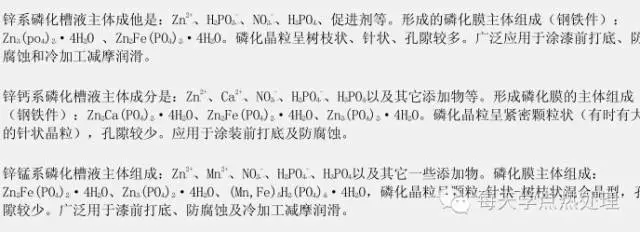
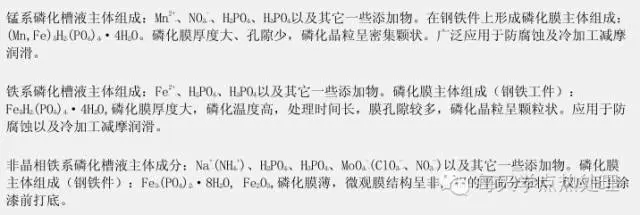
2.2 Classification by phosphating film thickness (phosphorus film weight)
Can be divided into sub-lightweight, lightweight, sub-heavyweight, heavyweight four.
The sub-lightweight film weight is only 0.1-1.0g/m2, which is generally an amorphous phase iron-based phosphating film, which is only used for primer-priming, especially for the large-deformed workpiece before the painting.
The lightweight film weighs 1.1 to 4.5 g/m2 and is widely used in pre-painting primers. It is less used in the anti-corrosion and cold-processing industries. The secondary heavyweight phosphating film has a thickness of 4.6-7.5 g/m2. Due to the large film weight, the film is thicker (generally >3 μm), and it is less used as a primer before painting (only as a steel piece with no basic deformation).
2.3 According to the phosphating temperature
According to the processing temperature, it can be divided into four categories: normal temperature, low temperature, medium temperature and high temperature.
Normal temperature phosphating is not heated phosphating.
Low temperature phosphating generally has a processing temperature of 30 to 45 °C.
Medium temperature phosphating is generally 60 to 70 °C.
High temperature phosphating is generally greater than 80 °C.
The temperature division method itself is not strict, and sometimes there are sub-middle temperature and sub-high temperature methods, which are determined by the wishes of each person, but generally follow the above division method.
2.4 Classification by accelerator type
Since there are only a few types of phosphating accelerators, it is advantageous to understand the bath according to the type of accelerator. The phosphating temperature can be determined generally according to the type of accelerator. For example, the nitrous acid promoter is mainly medium temperature phosphating. Promoters are mainly divided into: nitrate type, nitrite type, chlorate type, organic nitride type, molybdate type and other main types. Each type of accelerator can be used in combination with other accelerators, and there are many branch series. Nitrate types include:

Chlorate types include:

Nitrites include:

Molybdate types include:
There are many phosphating classification methods, such as steel, aluminum, zinc, and phosphating of mixed parts.
Safety Workwear has a wide range of high-quality, is used in perfect for a wide range of working environments and job roles, such as warehouse duties, building sites or parcel deliveries. If you are working in cold environments, outdoors, or in dangerous situations, then you need to wear safety workwear to keep highly visible and protect yourselves when carry out the job. Such as Winter Jacket, Safety Coverall, Safety pants etc.
Our safety worwear is made in hi-vis fabric and reflective tape, meeting EN ISO20471 standards, has useful functions, for example, keeping warm, having a host of storage pockets. All of our workwear items can be easily personalised with print or embroidered any logo and are quality products at very competitive prices.
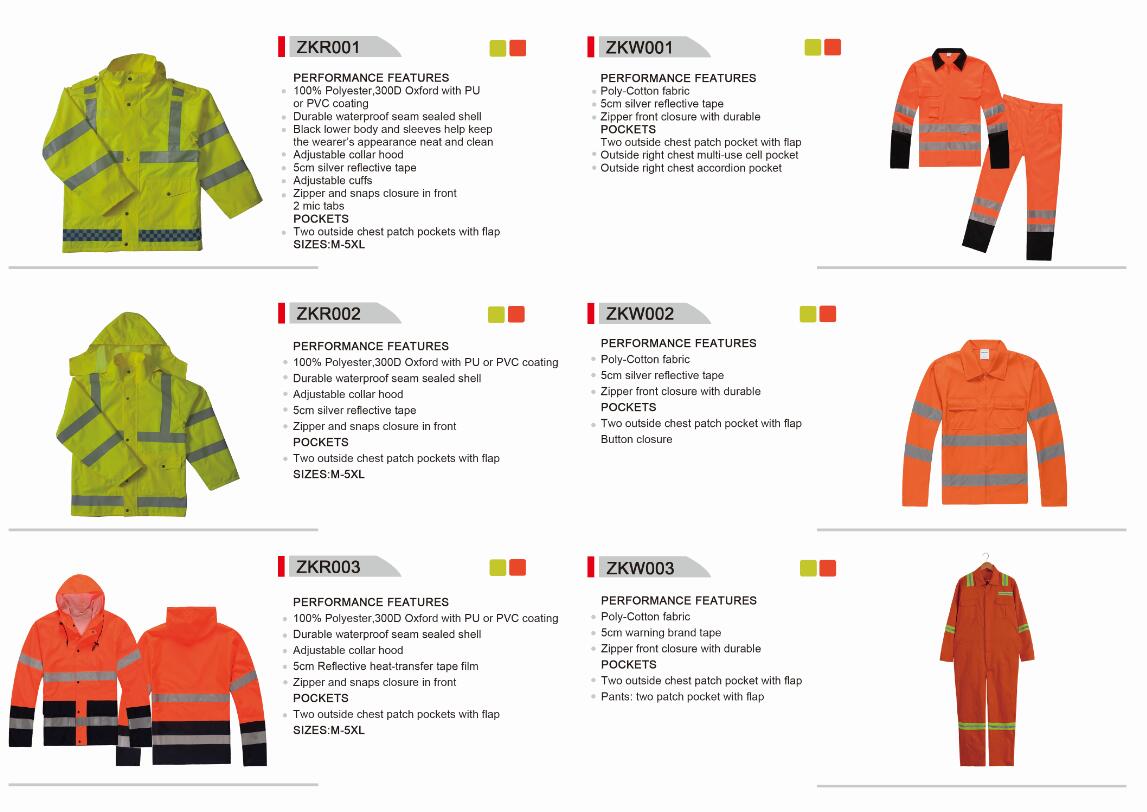
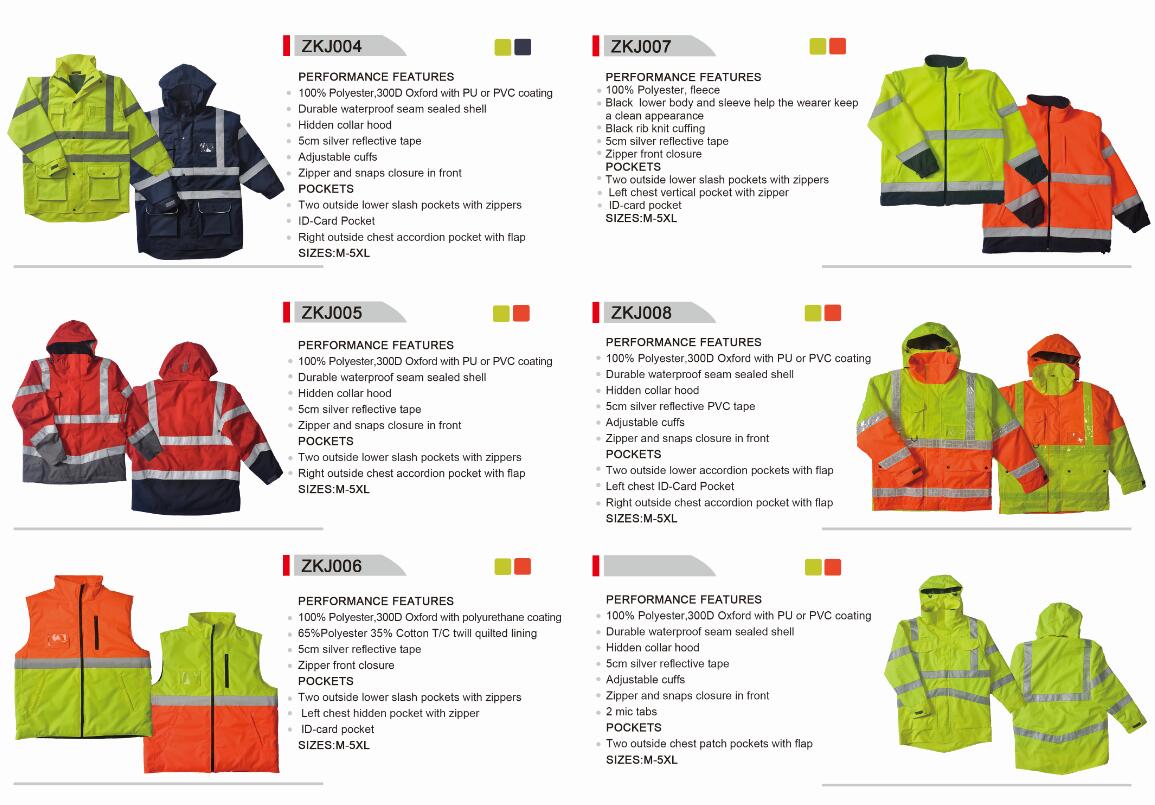
Safety Workwear
Safety Workwear,Work Vest,Warning Vest,Safety Clothing
Xinxiang Zhongke Reflective Material Co., Ltd. , https://www.safetyvest.pl